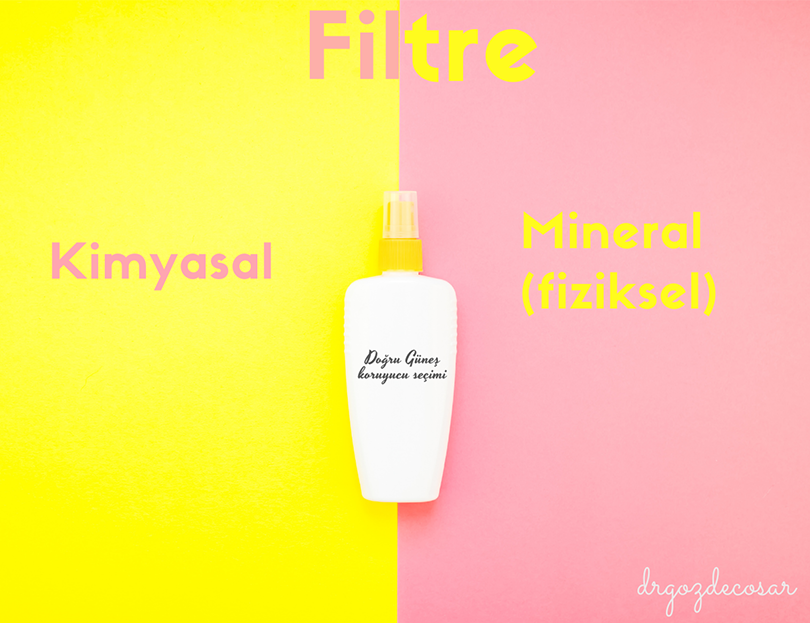Points to consider in selecting sunscreen
Minimum SPF30
UVA and UVB protection
Water resistant / water-proof
Odorless and colorless
Non-comedogenic (should not trigger oiliness or acne formation)
Non-irritating (should not cause allergic reactions like redness or burning)
Appropriate filter choice (chemical / mineral)
Chemical filter
Convert and absorb sun rays, reducing their penetration into the skin.
Contains at least one of the components like PABA (para-aminobenzoic acid) and its esters, cinnamates, salicylates, benzophenone 3, 4. These components can cause allergic reactions known as contact dermatitis in some skin types.
They are easily absorbed by the skin without leaving a white layer on the surface. This feature is more preferred for cosmetic reasons. However, easy absorption can clog pores and trigger acne formation.
When applied to a large area, there is a risk of allergic-toxic reactions due to the absorption of the components. Therefore, we do not recommend using them for children and pregnant individuals.
Physical (Mineral) filter
Work by creating a barrier on the skin and reflecting the incoming rays.
Due to their non-absorbent nature, they have low allergenic and irritant properties.
As they are not absorbed, they create a white layer on the skin’s surface. The presence of Titanium dioxide/zinc oxide are two scientifically proven FDA-approved components that indicate the effectiveness of a sunscreen. The selection of a suitable product based on an individual’s skin type, sensitivity, and needs should be determined through dermatological examination.


